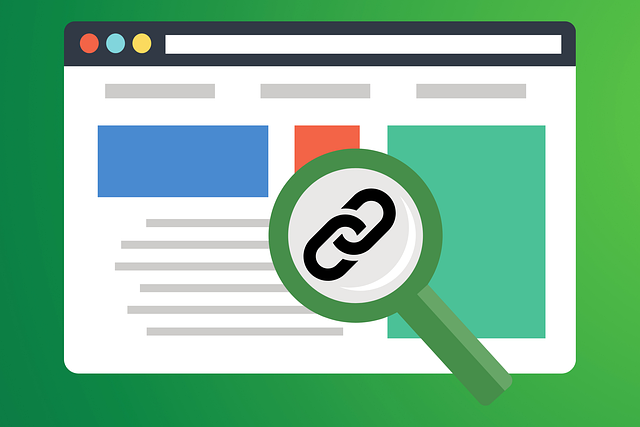Internal linking, a vital SEO strategy, enhances user experience and search engine crawling efficiency. Traditional methods are time-consuming and prone to errors, leading to broken links. A smart internal links tool automates link placement, ensures consistency, and adapts to content updates, optimizing SEO performance. These tools offer intuitive interfaces, automation, personalized anchor texts, comprehensive reporting, and contextual linking for improved site architecture and user engagement. By integrating with content strategies, they drive higher rankings, organic traffic, and lower bounce rates, as demonstrated by industry leaders like Amazon and Google. Selecting the right tool aligns with website goals, considering features like automated anchor text and analytics for effective internal linking and SEO success.
In today’s digital landscape, effective internal linking is crucial for enhancing user experience and search engine optimization (SEO). This article delves into the intricacies of smart internal links tools, a game-changer for navigating your site’s labyrinthine structure. We explore why traditional methods often fall short and how advanced solutions can revolutionize your content strategy. From understanding the basics to choosing the right platform, you’ll discover key insights to implement successful smart internal linking, boosting both user engagement and SEO rankings.
- Understanding Internal Linking: The Basics
- Challenges of Traditional Internal Linking Strategies
- Features of an Ideal Smart Internal Links Tool
- Benefits of Implementing Advanced Internal Linking Solutions
- Key Considerations When Choosing a Smart Internal Links Platform
- Real-World Examples of Successful Smart Internal Linking Implementations
Understanding Internal Linking: The Basics

Internal linking is a fundamental aspect of website structure and an essential component of any effective SEO strategy. It involves creating hyperlinks between pages within your site to improve user experience and help search engines understand your content’s hierarchy and relevance. By utilizing smart internal links, you can guide users through your site while enhancing its overall accessibility for both visitors and search engine crawlers.
A well-crafted smart internal links strategy ensures that relevant pages are interconnected, allowing users to navigate seamlessly and discover related content easily. This is particularly important in optimizing your website’s SEO as it enables search engines to crawl and index your pages more efficiently. A smart internal links tutorial or tool can assist in identifying opportunities to link internally, ensuring a logical and meaningful flow of information throughout the site.
Challenges of Traditional Internal Linking Strategies

Traditional internal linking strategies often face several challenges that can hinder their effectiveness. One of the primary issues is manual link placement, which is time-consuming and prone to errors. Linking every relevant page within a website requires significant effort, especially for larger sites with extensive content. This process can lead to inconsistencies in link placement and anchor text usage, affecting both user experience and search engine optimization (SEO).
Additionally, traditional methods struggle to adapt to the dynamic nature of content creation. As websites evolve, new pages are added, and existing ones are updated or removed, keeping internal links current becomes a constant challenge. This can result in broken links, negatively impacting user experience and SEO rankings. A smart internal links tool addresses these challenges by automating link placement, ensuring consistency, and seamlessly integrating with content updates, thereby optimizing the smart internal links strategy and smart internal links optimization for better SEO outcomes.
Features of an Ideal Smart Internal Links Tool

When searching for a smart internal links tool, several key features stand out as essential. Firstly, an intuitive user interface is crucial; the tool should offer a seamless experience, allowing users to effortlessly navigate and manage their internal links without any complexity. Secondly, automation capabilities are a game-changer. The ideal tool should automatically generate and update links, ensuring your content remains interconnected with precision and efficiency. This feature saves time and reduces manual errors.
Moreover, the ability to personalize link anchor texts is valuable for both SEO and user experience. Smart internal links tips often include using descriptive and contextually relevant anchor texts, enhancing both the user’s understanding and search engine crawling. Additionally, a comprehensive reporting system enables users to track the performance of their internal linking strategy, allowing them to make data-driven adjustments and improvements over time.
Benefits of Implementing Advanced Internal Linking Solutions

Implementing advanced internal linking solutions offers significant advantages for any website looking to enhance its online presence and search engine optimisation (SEO). A smart internal links tool becomes an invaluable asset by seamlessly integrating with your content strategy, enabling you to create a network of relevant, contextual links throughout your site. This not only improves the user experience but also provides a clear path for search engines to crawl and index your pages effectively.
One of the key benefits is improved SEO performance. Smart internal links optimization ensures that your website’s architecture is logical and hierarchical, allowing search engine algorithms to understand the relationships between different pages. This can lead to better rankings, increased organic traffic, and a lower bounce rate as visitors find relevant content more easily. Additionally, these tools offer valuable insights into link patterns, helping you identify areas for improvement and ultimately creating a more efficient and effective website structure.
Key Considerations When Choosing a Smart Internal Links Platform

When selecting a smart internal links tool, several key considerations come into play. Firstly, understand your website’s unique needs and goals—whether it’s enhancing user experience, boosting SEO rankings, or both. This will guide your choice of features, such as automated anchor text generation, contextual linking suggestions, and seamless integration with your existing CMS.
Additionally, look for platforms that offer robust analytics and reporting capabilities, enabling you to track the performance of your internal links over time. A smart internal links tutorial or smart internal links SEO optimization guide from reputable sources can also be invaluable in learning best practices and fine-tuning your strategy. Ensure the tool aligns with industry standards and regularly updates its algorithms to stay ahead of search engine trends.
Real-World Examples of Successful Smart Internal Linking Implementations

In today’s digital landscape, effective internal linking is no longer just a best practice—it’s a strategic necessity. Leading brands and websites have already harnessed the power of smart internal links tools to enhance user experience, boost SEO, and drive conversions. For instance, consider Amazon, which cleverly integrates product suggestions within articles and blog posts, guiding users towards relevant purchases with minimal effort. This smart internal links strategy not only increases average session duration but also elevates the brand’s authority in its niche.
Another excellent real-world example is Google, which employs a smart internal links tutorial approach to guide users through related content on their search results pages. By suggesting similar or complementary articles, Google improves user engagement and satisfaction while optimizing for smart internal links optimization. This strategy not only benefits the search engine’s algorithms but also enriches the overall online experience for users.
